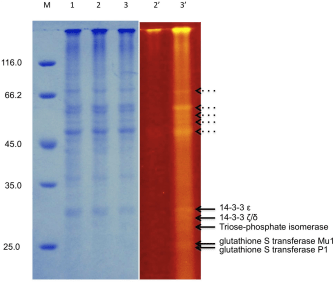Glycated HSA Rhodamine Boronic Acid small molecule (tool compound)
Invented by Marta P. Pereira Morais
Invented at University Of Bath
- Datasheet
- References (1)
- Inventor Info
Info
| Catalogue Number | 154474 |
| Antigen/Gene or Protein Targets | Advanced Glycation Endproducts (AGE); specifically Glycated Human Serum Albumin (HSA). Also binds ApoA-I protein. |
| Synonyms | AGEs |
| Relevance |
Protein glycation, also known as non-enzymatic glycosylation, has been implicated in various disease states and is therefore an important biomarker for ageing and age-related chronic diseases such as diabetes, cardiovascular diseases, autoimmune diseases, cancer, and Alzheimer’s disease. However their analysis is challenging due to the complexity of the protein-carbohydrate adducts. Fluorescent boronic acids like these enable the detection and identification of individual glycated proteins in complex samples through gel electrophoresis. |
| Research Area | Neurobiology, Protein Degradation, Cardiovascular, Immunology |
| Notes | This small molecule has been used to identify glycated proteins in human serum, insect hemolymph, and mouse brain homogenates. |
References: 1 entry
References: 1 entry
Inventor Information
Inventors

|
Marta P. Pereira Morais |








